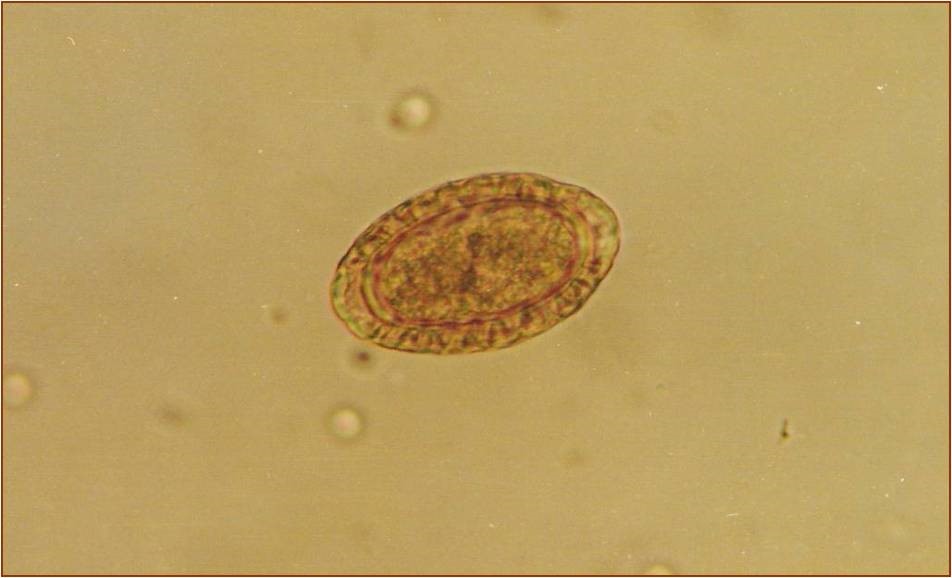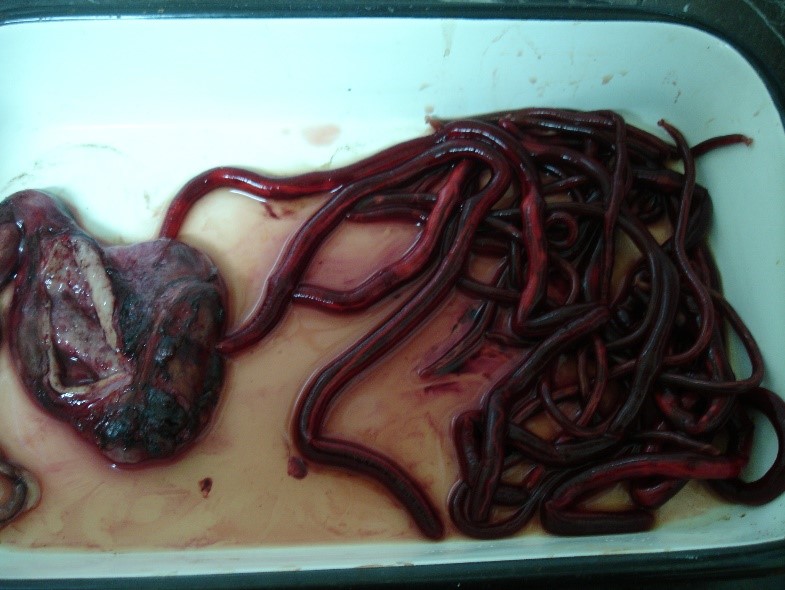Giant Kidney Worm
(Dioctophyme renale)
Dioctophyme renale is a large enoplid nematode that infects the kidneys of dogs and occasionally cats. It is zoonotic.
Distribution
Dioctophyme renale is found worldwide but is less common in Africa and Oceania.
Clinical signs
Dioctophyme renale infection in cats may cause a range of clinical manifestations, varying from subclinical to severe life-threatening disease. Clinical signs may include weakness, jaundice, dehydration, ascites and prostration. Parasite invasion into the peritoneal cavity can lead to adhesions, peritonitis and, eventually, death [1].
Diagnosis
Dioctophyme renale infections in cats can be confirmed by finding eggs in urine samples. Eggs (approximately 62-75 x 36-53 µm) (Fig. 1) have elliptical shape, generally with symmetrical and clear bipolar plugs, covered by a thick, rough shell [2]. Imaging techniques (e.g. radiography and ultrasonography) may help in revealing the presence of adult worms in the kidneys. Nonetheless, the diagnosis is often done during surgery for other reasons or eventually during necropsy (Fig. 2).

Figure 1. Egg of Dioctophyme renale in a urine sample (Image credit: Dr. G. Perez-Tort)

Figure 2. Adult Dioctophyme renale worms excised from kidney of a dog (Image credit: Dr. G. Perez-Tort)
Treatment
The surgical removal of worms from the kidney is the most effective and commonly recommended treatment against D. renale.
Prevention and Control
The control of D. renale may be achieved by preventing cats from hunting and eating aquatic worms, fish, crustaceans, frogs or other amphibians.
Public health considerations
Cases of human infection by D. renale have been reported. The eggs shed by infected dogs and cats are not directly infective for humans. Humans become infected after eating raw or insufficiently cooked fish or frogs (paratenic hosts).
References
[1] Verocai GG, Measures LN, Azevedo FD, Correia TR, Fernandes JI, Scott FB. Dioctophyme renale (Goeze, 1782) in the abdominal cavity of a domestic cat from Brazil. Vet Parasitol. 2009;161:342-344.
[2] Pedrassani D, Lux Hoppe EG, Avancini N, do Nascimento AA. Morphology of eggs of Dioctophyme renale Goeze, 1782 (Nematoda: Dioctophymatidae) and influences of temperature on development of first-stage larvae in the eggs. Rev Bras Parasitol Vet. 2009;18:15-19.
